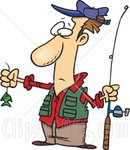Using the right fish tank equipment means implementing all of the following pieces of equipment in your aquarium set up:
- A proper filtration system.
- A heater.
- A thermometer.
- Aquarium plants or Airstone.
- The right Décor.
Filtration- is a necessary part of keeping your aquarium properly equipped. Filtration pulls the water through, filtering out impurities, waste and other bits and releasing clean water back into the aquarium. Not only should you have the fight filter in your aquarium, but you have to make sure that you are using the right filter media as well. Most filters use charcoal to purify the water before releasing it back into the aquarium, sans waste and debris.
Heater - Most tropical and salt water fish prefer warmer waters. Goldfish are usually more than happy to be in colder waters, but if you want to keep your tropical fish happy, keep them warm. Most heaters for aquariums are set up so that they only click on when the water needs a boost of warmth. Make sure that you also have a thermometer installed inside your aquarium so that you can make sure that the right temperature is being reached at all times. Different fish species have different temperature requirements, so keep that in mind when setting your heater.
Aquarium Plants and Airstones - These two pieces of equipment are not necessarily vital to the health of your fish, but they are nice and helpful additions. Plants and airstones both introduce oxygen into the water and while fish do not need to breathe the air we breathe, they do need the oxygen in the water in order to survive. Airstones release oxygen into the water by way of bubbles, and plants naturally produce oxygen as part of their normal life cycle. So while not exactly necessary, these props are still worthwhile additions to your aquarium setting.
Décor - Some people would tell you that décor is not a vital part of any aquarium setting, but some fish do require it.
For example, African Cichlids are aggressive fish that take up territories in an aquarium. If you plan to house numerous Cichlids in the same aquarium, giving them different territories and boundaries is a good way to keep them from harming one another. Another less than vital aspect of the aquarium setting, but still worthwhile if you want to create a safe haven for your fish.
Article Source: http://www.articlesbase.com/pets-articles/using-the-right-fish-tank-equipment-436525.html


